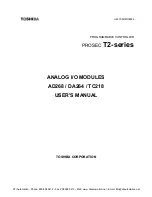
Homebrewing– Option 3: All- Grain Continued
Step 16:
After re-attaching the
Collection Ball,
re-open the
Union Valve
Step 17:
Allow brew to sit for remainder of secondary fermentation (times vary)
Step 18:
When secondary fermentation is complete, turn off the
Union Valve
and remove the
Collection Ball
and discard the contents
Step 19:
Your beer is now ready to bottle
Bottling/Kegging Day:
Step 20:
Wash, sanitize all beer bottles and place in a
FastRack24
. Also sanitize
Hose,
Hose Barb
and
Hose Clamp
Step 21:
Prepare priming solution
Step 22:
Add priming solution to
FastFerment
and stir gently
Step 23:
Wait for sediment to settle for 15-30 minutes before proceeding
Step 24:
Attach the
Filling Hose Attachment
Step 25:
Put the
Hose Clamp
on the
Hose
and make sure it is closed. Then open the
Union Valve
to start filling beer into bottles. Try to minimize the exposure to the air. Fill the
bottles so that the beer is about 1” (2.54cm) from the top and cap
Step 26:
Clean
FastFerment
and other equipment
Step 27:
Place bottles in a room-temperature area and let them sit to allow carbonation to
take place
A typical 5-gallon batch requires two cases (48) of 12oz (355ml) bottles for bottling
There’s a Brewing video - www.FastBrewing.com
EN
24
FastFerment FAQs are regularly updated on our website
Go To - www.FastBrewing.com
1. Valve is Leaking Through the Middle - IT’S NOT BROKEN!
The valve needs to be tighened. Over time, the middle of the valve may come loose and needs
to be tightened using the handle as a wrench. Follow these instructions:
Pop the handle off the valve
Place the knobs in the matching divits
Tighten the valve in
clockwise rotation
To clean the valve, use the same instructions &
remove the middle by rotating counter-clockwise
Step 1
Step 2
Step 3
EN
25
Top 5 Frequently Asked Questions (FAQs)
Click
FAQs
FastFerment
Top 5 Frequently Asked Questions (FAQs) Continued
2. The Valve is Clogging
The valve clogs if there are large hops or peices of flavoring funneling down into the
Collection Ball.
The best way to ensure this doesn’t happen is to use our
Hop Filte
r for
everything inside and agitate the conical every so often, it will not clog.
3. Is the Valve Open or Closed During Fermentation?
The valve should always be open during Fermentation to allow the trub or sediment fall into
the Collection Ball for easy removal. The FastFerment is a closed system so the valve can be
left open at all times.
4. Can I set the FastFerment down on the Collection Ball since it’s Flat?
NO WAY! It is not meant to sit on the collection ball and will 100% fall over, break and
probably mess your entire floor. You MUST use the wall mounts or a stand when using
the FastFerment.
5. What Temperatures can the FastFerment Handle?
Your
FastFerment
can handle 176°F (80°C) safely. If you go above this temperatures with any
of the parts, we cannot guarantee them.
.
FastFerment FAQs are regularly updated on our website
www.FastBrewing.com
Click
FAQs
FastFerment
EN
26
Hydrometer Readings
A hydrometer is an instrument used to measure the specific gravity of liquids. Measuring
gravity is the same as measuring the density.
We use it to determine how much fermentable sugar the wort or must contains. Sugar is more
dense than water, so a solution such as wort with lots of sugars will have a higher reading. The
more alcohol content in the liquid, the lower the reading will be.
You should always try and take your reading using a sample of your liquid that is around 68°F
(20°C). If the liquid is 41°F (5°C) higher, add 0.001 and similarly, if it’s 41°F (5°C) lower, take off
0.001.
Why Use A Hydrometer?
Taking a hydrometer reading allows you to accurately test whether fermentation is complete.
A hydrometer reading (taken before mixing with yeast) will also help you at the end when you
are interested in calculating your alcohol content level.
Starting/Original Gravity (OG)
All beer and wine vary on their starting gravity. For wine, an average OG should be
1.070 to 1.090. For beer, the OG starts in the 1.030-1.060 range.
The first reading should be at the start of fermentation.
Ensure your sample is 68°F (20° C). If not, wait until the sample is closer to this
temperature for the most accurate reading.
EN
27



























